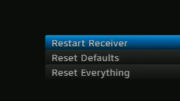If you live where internet speeds are slow, you spend every day just longing for something better. You see your friends streaming Netflix in 4K or sharing large files easily. It’s a drag. But hey, you’ve got DIRECTV, the best quality and best selection in home entertainment, so you’re still doing ok. You’re aware that DIRECTV has tens of thousands of titles available on demand, but you can’t even stream Netflix without it turning into a blurry mess. So you’ve never tried it.
Here’s the great news — even you, with your slow internet — can get DIRECTV On Demand in full quality.
The tradeoff is you may not be able to get it live. If your DVR is connected to the internet, you can get on demand from DIRECTV, period. Unlike other streaming systems, DIRECTV can download programs to your DVR. That means it doesn’t need to come down “live.” If your internet is too slow to stream live, you’ll have the option to record the program to watch later. If it takes two hours for a one-hour show, so be it — you’ll get top quality when it is ready.
If you do have fast internet, you can stream in real time, just like with other services, but that’s really only one part of the story. Because DIRECTV’s on demand systems date back to 2008, they’re designed for situations where it was impossible to stream in real time. That means you can stack up multiple programs and let them download all night. Then, you can watch them on your time. It’s a good option, not just for people with slow internet but also for people who are expecting an internet outage for a day or two.
But let’s say you do want to stream in real time — what speed do you need? Again, DIRECTV on demand is a little different from other systems that are designed only for streaming. Netflix, Hulu and other services will automatically give you a lower-quality picture if you can’t get a full-quality one. DIRECTV won’t do that; it will always give you top quality, but it may take longer to get there.
For the best streaming experience, you’ll need a sustained rate of about 2Mbps for SD and 10Mbps for HD. I say “sustained rate” because if the speed drops down below that level the process could stop completely while the system waits to catch up. Most sites will tell you that in order to get a “sustained rate” you need to have internet service that is at least twice the speed of that “sustained rate.” So, figure 4Mbps for SD and 20Mbps for HD. If you’re not getting that speed from speed tests, you may have problems with DIRECTV in real time.
I’ll admit those numbers are a worst-case scenario and that in some cases you can get full HD with 6Mbps. It just depends on the program. DIRECTV uses variable bit rate encoding, meaning that really fast-moving complex programs (like sports) take up more space than slower programs like news or less complex programs like old-school cartoons. This is done to help DIRECTV save on satellite bandwidth, but it also helps you when you’re streaming programs.
As I said, if you’re expecting a long internet outage or if you have slow internet, the best thing to do is to stack up several programs before going to bed and you’ll find that something, at least one thing, will be ready when you wake up. Even if you have the slowest internet service offered today, you still don’t have to miss out on the streaming revolution. Thanks, DIRECTV!





